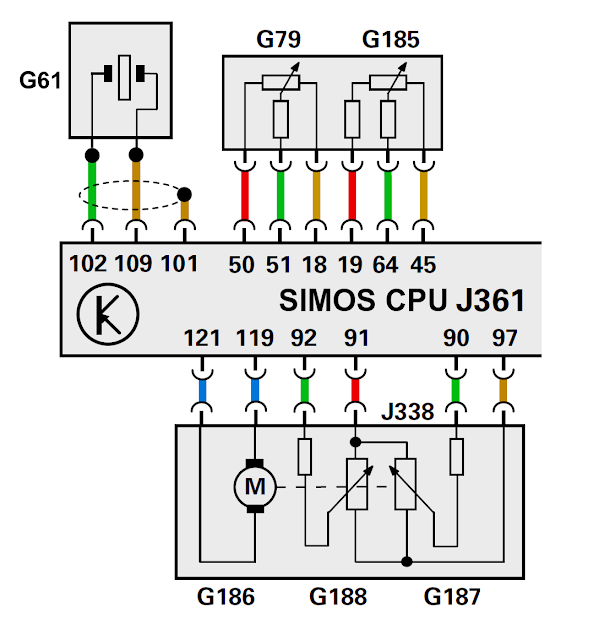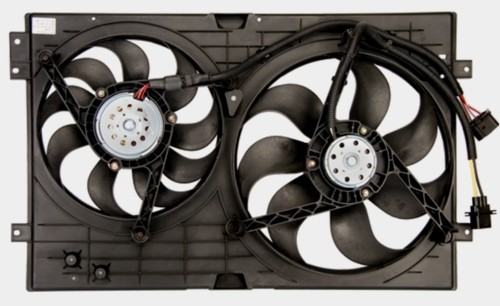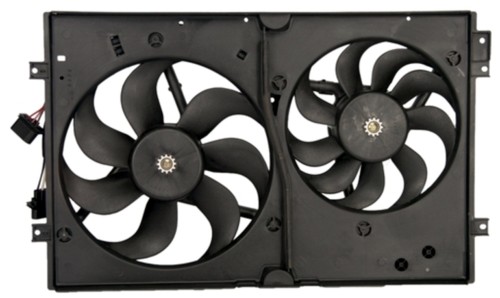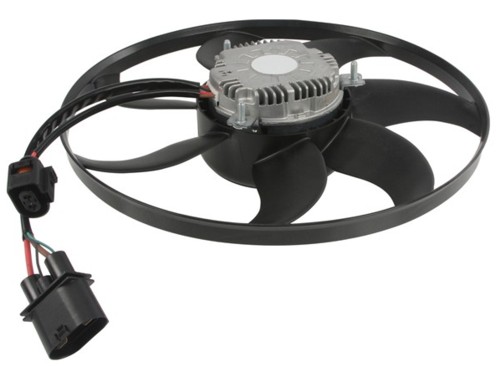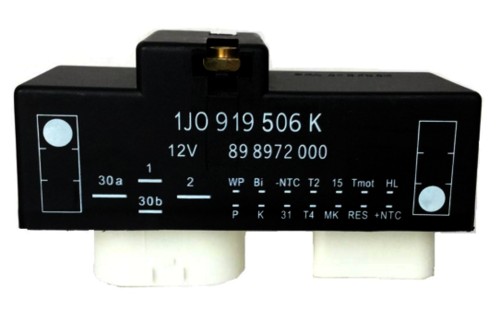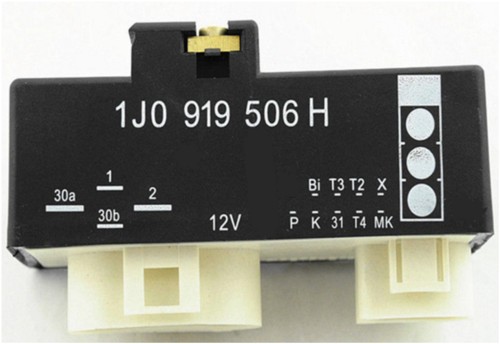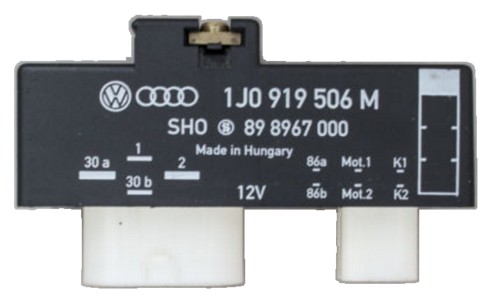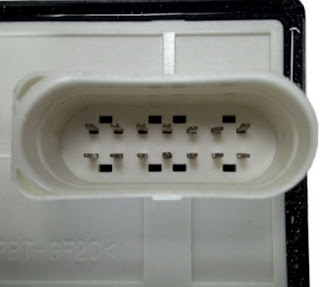HEATER FAN BLOWER NOT WORKING
With Winter looming in the Northern Hemisphere and Summer looming in the Southern Hemisphere, our car air conditioners are going to be in big demand very soon. On a really hot day the temperature down here in the Cape can easily rise to 35 degrees celsius and the inside of any car would be roughly 3-4 degrees more. That's the kind of discomfort nobody has signed up for. The converse is just as true, I remember when I was in Germany a few years back, during November the temperature dropped right down to minus 24 degrees celsius and whilst in France it was around minus 4 degrees or less most mornings. Trying to brave such weather conditions without on-board creature comforts borders on insane. So while the temperatures hasn't peaked yet, there is still time to get your fan/blower fixed.
Of late, somehow several VW, Audi, Seat and Skoda owners have been having issues with the fan/ac/blower not working or not working properly. On a previous blog I failed to add the fan/blower issue to the list of common problems, but believe me it is. Below are some questions asked by a few VW owners regarding their respective VW vechicle refering to the fan/AC/Blower motor. Well the culprit is normally the Heater Fan Blower Motor Tandem Resistor with OE/OEM Number 6Q0959263A / 6Q0959263/6Q0 959 263 A, manufactured by Hans Pries. Alternatively the Hella brand replacement part with part number 5HL 351 321-301 or 5HL351321-301.
The speed of the 12V blower motor is controller via this series "blower resistor". It's a wire wound ceramic resistor and it does get quite hot on speeds position 1, 2 and 3. In the last position the resistor is bypassed. So if you blower isn't working on every speed it is most likely the resistor. However if you have an A/C with a four speed switch and the blower doesn't work on any of its 4 positions, then its most likely the ground wire that's loose, burnt, poor contact, intermittent. Look behind the fan switch, there is a large 4 pin white molex connector and when its ground wire overheats, it looks discoloured, sort of lightly toasted and sometimes makes intermittent contact. On some models the motor is electrically isolated, so connect a jumper between the car body and motor earth, just to test. If the connector is faulty, the motor with spin. If it doesn't spin, check for 12V DC supply on the Red/White wire with a multimeter, if there is no supply voltage, check the fuse and the heater relay.
Black/White - position 1
Yellow/Black - position 2
Yellow - position 3
Brown - from blower motor to ground/earth
Red/white - 12V supply
Blue - position 1
Green - position 2
Black - position 3
Red - position 4
Brown - from blower motor to ground/earth
With Winter looming in the Northern Hemisphere and Summer looming in the Southern Hemisphere, our car air conditioners are going to be in big demand very soon. On a really hot day the temperature down here in the Cape can easily rise to 35 degrees celsius and the inside of any car would be roughly 3-4 degrees more. That's the kind of discomfort nobody has signed up for. The converse is just as true, I remember when I was in Germany a few years back, during November the temperature dropped right down to minus 24 degrees celsius and whilst in France it was around minus 4 degrees or less most mornings. Trying to brave such weather conditions without on-board creature comforts borders on insane. So while the temperatures hasn't peaked yet, there is still time to get your fan/blower fixed.
Of late, somehow several VW, Audi, Seat and Skoda owners have been having issues with the fan/ac/blower not working or not working properly. On a previous blog I failed to add the fan/blower issue to the list of common problems, but believe me it is. Below are some questions asked by a few VW owners regarding their respective VW vechicle refering to the fan/AC/Blower motor. Well the culprit is normally the Heater Fan Blower Motor Tandem Resistor with OE/OEM Number 6Q0959263A / 6Q0959263/6Q0 959 263 A, manufactured by Hans Pries. Alternatively the Hella brand replacement part with part number 5HL 351 321-301 or 5HL351321-301.
The speed of the 12V blower motor is controller via this series "blower resistor". It's a wire wound ceramic resistor and it does get quite hot on speeds position 1, 2 and 3. In the last position the resistor is bypassed. So if you blower isn't working on every speed it is most likely the resistor. However if you have an A/C with a four speed switch and the blower doesn't work on any of its 4 positions, then its most likely the ground wire that's loose, burnt, poor contact, intermittent. Look behind the fan switch, there is a large 4 pin white molex connector and when its ground wire overheats, it looks discoloured, sort of lightly toasted and sometimes makes intermittent contact. On some models the motor is electrically isolated, so connect a jumper between the car body and motor earth, just to test. If the connector is faulty, the motor with spin. If it doesn't spin, check for 12V DC supply on the Red/White wire with a multimeter, if there is no supply voltage, check the fuse and the heater relay.
BLOWER SWITHC CONECCTIONS
Red/Black - 12V supply to switch from fuse/relay boxBlack/White - position 1
Yellow/Black - position 2
Yellow - position 3
Brown - from blower motor to ground/earth
Red/white - 12V supply
Blue - position 1
Green - position 2
Black - position 3
Red - position 4
Brown - from blower motor to ground/earth
 |
| Blower motor series resistor can be found in the glove compartment on some models |
Question:
My heater fan doesn't seem to be working properly, I can feel a small amount of air blowing but I don't hear the blower motor. Please help me!Answer:
Read the blog!Question:
Just bought an Audi A2 2005 and discovered defroster/heat/AC doesn't work. Is this major or should I cancel the sale?Answer:
Read the blog!Question:
I have problem with my Jetta fan/blower that stops working, it just switched off after only owning car for two months. No DTC codes!Answer:
Read the blog!Question:
I recently noticed my interior heater/fan was becoming weak, and stops altogether at low speeds. Must I replace the motor.Answer:
Its very likely that the motor brushes has reached end of life. I think a new pair will give you blower a new lease on life. You didn't indicate what car you have, because yours motor can possibly be of the sealed type, meaning you would have to replace the motor if and only if you've exhausted the above.Question:
My Golf's fan/blower works OK, but after a while it makes a really loud noise like its struggling to keep turning and then it switches off. However when I hit a speed bump in the road it gives me a fright when it just turns back on. Can you help?Answer:
Read the blog!Question:
Just bought a VW caddy and the fan/blower seems lazy and makes a noise that varies between loud and quite, previous owner says there is a leaf that fell down the ducting and lying on the fan. I'm not convinced because sometimes when I turn on the blower, it doesn't blow at all. Any suggestions?Answer:
Read the blog!
The heater fan blower motor resistor is one of those items that works on a great many VW, Audi, Skoda and SEAT cars. The list below gives you some idea how common the problem really is. When you suspect that your heater fan thermal resistor has gone faulty make certain the part number is the same as the one you replacing it with because there is a fair amount of variation even though there is a degree of compatibility.
| Audi, SEAT, compatibility list |
| SEAT and Skoda compatibility list |
